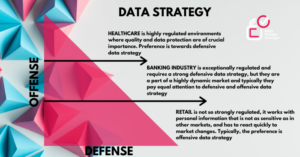
People management techniques sets the stage for this enthralling narrative, offering readers a glimpse into a story that is rich in detail and brimming with originality from the outset.
This topic delves into the critical importance of managing people effectively within organizations, highlighting various techniques that enhance employee engagement and productivity. From emotional intelligence to innovative practices, understanding these techniques is essential in today’s dynamic business landscape.
Understanding People Management Techniques
Effective people management is crucial for the success of any organization. It encompasses various techniques that facilitate the optimal functioning of teams and the overall workforce. By understanding these techniques, organizations can create a more productive and harmonious work environment.
Importance of Effective People Management
Effective people management helps organizations in numerous ways, including enhancing employee satisfaction, increasing productivity, and fostering company loyalty. Organizations that prioritize effective management practices tend to have lower turnover rates and a more engaged workforce. This not only leads to improved performance but also strengthens the company’s culture.
Various People Management Techniques

There are several techniques that can be employed in people management, including but not limited to:
- Coaching and Mentoring: Providing guidance and support to employees to help them grow and develop their skills.
- Performance Appraisals: Regular assessments of employee performance to provide constructive feedback and set future goals.
- Employee Engagement Surveys: Collecting feedback from employees to understand their needs and improve workplace conditions.
Role of Emotional Intelligence
Emotional intelligence plays a pivotal role in managing people effectively. Leaders who possess high emotional intelligence can better understand and respond to their employees’ feelings, leading to improved relationships and a more positive work environment. Recognizing emotions in oneself and others is essential for effective communication and conflict resolution.
Business Innovation and People Management
Innovative practices in people management can significantly enhance organizational performance. By adopting new strategies and tools, companies can improve their management techniques and overall employee satisfaction.
Enhancing People Management Through Innovation
Innovation in people management can take various forms, such as implementing new technologies, adopting flexible work arrangements, or utilizing data analytics for decision-making. These innovations can streamline processes, improve communication, and foster a culture of continuous improvement.
Examples of Successful Integration of Innovation
Companies like Google and Zappos have successfully integrated innovative practices into their management techniques. Google’s use of data analytics to optimize team performance and Zappos’ emphasis on a strong company culture are prime examples of how innovative approaches can lead to higher employee satisfaction and productivity.
Impact of Technology on People Management Strategies
Technology has revolutionized people management strategies. Tools such as Human Resource Information Systems (HRIS), performance management software, and virtual communication platforms allow for more efficient management processes. This shift not only saves time but also facilitates better data-driven decisions regarding employee engagement and development.
International Business and People Management
Managing people in an international context brings unique challenges that require a nuanced understanding of different cultural practices and management techniques.
Comparing People Management Techniques in Different Cultures
People management techniques can vary significantly across cultures. For instance, while some cultures may value direct communication and assertiveness, others may prioritize harmony and indirect communication. Understanding these cultural differences is essential for effective management in a global environment.
Challenges in Managing International Businesses
International businesses often face challenges such as language barriers, differing labor laws, and varying employee expectations. These factors can complicate management efforts and require tailored strategies that consider the unique aspects of each location.
Strategies for Managing Diverse Teams
To effectively manage diverse teams across borders, organizations can implement strategies such as:
- Cultural Sensitivity Training: Educating employees about different cultural norms and practices.
- Inclusive Policies: Developing policies that promote inclusion and respect for diversity.
- Regular Communication: Ensuring open lines of communication to address any issues or misunderstandings that may arise.
Conducting Business Interviews Effectively
Conducting effective interviews is crucial for assessing candidates’ compatibility with an organization’s culture and people management needs.
Methods for Effective Interviews
Utilizing structured interviews can improve objectivity and consistency in evaluating candidates. Questions should focus on both technical skills and soft skills, such as teamwork and adaptability.
Best Practices for Evaluating Compatibility
Assessing a candidate’s cultural fit is essential. This can be achieved through behavioral interview questions that probe past experiences and decision-making processes relevant to the organization’s values.
Checklist for Interviewers
A checklist can help ensure a thorough evaluation of candidates, including:
- Preparation: Review the candidate’s resume and prepare relevant questions.
- Environment: Create a comfortable atmosphere to encourage open dialogue.
- Follow-Up: Ensure timely communication with candidates post-interview.
Job Search Techniques for Management Professionals
For management professionals, effective job search techniques are essential to stand out in a competitive market.
Effective Job Search Techniques
Candidates should leverage various job search strategies, including networking, utilizing job boards, and directly approaching companies of interest. Tailoring applications to highlight relevant management experience is critical.
Networking Strategies
Building a strong professional network can enhance job prospects. Attending industry conferences, joining professional organizations, and connecting on platforms like LinkedIn are effective methods for expanding one’s network.
Tailoring a Resume
A well-crafted resume that emphasizes people management skills is vital. Candidates should showcase their achievements in managing teams, improving processes, and driving results.
Business Management Strategies
People management is intrinsically linked to overall business management success. Effective strategies can lead to improved organizational performance.
Connection Between People Management and Business Success
Organizations that prioritize people management often see enhanced employee engagement, leading to higher productivity and lower turnover rates. This positive cycle contributes to overall business success.
Business Management Models
Various management models, such as the Balanced Scorecard and Lean Management, can inform effective people management techniques. These models promote alignment between employee performance and organizational goals.
Key Performance Indicators
To measure people management effectiveness, organizations can utilize key performance indicators (KPIs) such as employee retention rates, engagement scores, and productivity metrics.
Marketing Direct and People Management
Effective people management underpins successful marketing campaigns.
Role of People Management in Marketing Success
Strong people management practices foster collaboration and creativity within marketing teams, leading to more innovative campaigns and higher effectiveness.
Examples of Successful Marketing Teams
Companies like Apple have excelled in marketing due to their commitment to effective people management, fostering a culture of creativity and collaboration among their marketing professionals.
Framework for Integrating People Management in Marketing
Organizations can develop a framework that includes:
- Regular Training: Offering training sessions focused on both marketing skills and people management techniques.
- Feedback Loops: Establishing channels for team members to provide and receive feedback on projects.
- Celebrating Success: Recognizing individual and team contributions to build morale and motivation.
Business Networking for People Management Professionals
Building a robust professional network is essential for individuals in the people management field.
Strategies for Building a Network
Networking can be achieved through various methods, including attending industry seminars, participating in workshops, and engaging in online forums related to people management.
Importance of Mentorship
Mentorship plays a crucial role in career advancement. Having a mentor can provide guidance, support, and valuable industry insights that can help individuals navigate their career paths effectively.
Key Networking Events and Platforms
Professionals should consider participating in events such as HR conferences and joining organizations like the Society for Human Resource Management (SHRM) to enhance their networking opportunities.
Business Outsourcing and People Management
Outsourcing can significantly impact people management practices, requiring careful consideration and planning.
Effects of Outsourcing on People Management
Outsourcing may lead to challenges in maintaining company culture and ensuring effective communication. Organizations must develop strategies to address these challenges.
Managing Outsourced Teams Effectively
To effectively manage outsourced teams, companies can implement:
- Clear Communication Channels: Establishing protocols for regular updates and feedback.
- Performance Monitoring: Using KPIs to assess the performance of outsourced teams.
- Integration Efforts: Encouraging collaboration between in-house and outsourced teams to foster unity.
Case Studies of Successful Outsourcing
Companies like IBM and Accenture have successfully managed outsourced operations while maintaining strong management practices, ensuring alignment with their organizational goals.
Effective Business Presentations
Delivering impactful presentations on people management techniques requires careful planning and consideration.
Guidelines for Delivering Presentations
Effective presentations should be structured, engaging, and visually appealing. Presenters should focus on clear messaging and audience engagement.
Engaging the Audience
Engagement techniques, such as asking questions and incorporating interactive elements, can help maintain audience interest and facilitate discussion around management strategies.
Using Visual Aids
Visual aids, such as slides and charts, can enhance communication by illustrating key points and making complex information more digestible for the audience.
Enhancing Business Productivity through People Management
Effective people management techniques can significantly boost organizational productivity.
Techniques to Boost Productivity
Strategies such as setting clear goals, providing regular feedback, and encouraging professional development can enhance productivity among employees.
Employee Engagement and Productivity
There is a strong correlation between employee engagement and productivity. Engaged employees are more likely to perform at higher levels, contributing to overall business success.
Creating a Motivated Workforce
To create a motivated workforce, organizations can implement:
- Recognition Programs: Acknowledging employee achievements can boost morale.
- Career Development Opportunities: Offering training and advancement options can keep employees engaged.
- Work-Life Balance Initiatives: Supporting employees in achieving a healthy work-life balance can lead to increased satisfaction and productivity.
People Management in the Restaurant Industry
People management in the restaurant industry presents unique challenges that require specialized techniques.
Challenges in Restaurant People Management
High turnover rates and irregular hours are common challenges in this sector. Managing staff effectively in these conditions is crucial for maintaining service quality.
Techniques for Training and Retaining Staff
Training programs that emphasize customer service skills and team cohesion can help in retaining staff. Additionally, offering flexible schedules can attract and keep employees.
Creating a Positive Workplace Culture
A positive workplace culture in restaurants can be nurtured through:
- Team-Building Activities: Organizing team events can foster camaraderie.
- Open Communication: Encouraging feedback from staff can improve morale and address concerns.
- Recognition Programs: Celebrating employee achievements can enhance job satisfaction.
Resumes and Cover Letters for Management Positions
Crafting impactful resumes and cover letters is essential for management candidates looking to highlight their people management skills.
Guidelines for Crafting Resumes and Cover Letters
Resumes should be tailored to emphasize relevant skills and experiences in people management. Cover letters should convey passion for the role and the value the candidate brings.
Importance of Showcasing People Management Skills
Candidates must clearly demonstrate their people management abilities in their applications, as these skills are often a key determining factor in hiring decisions.
Template for Standout Resumes
A standout resume for management roles should include:
- Contact Information: Clearly displayed at the top.
- Professional Summary: A brief overview highlighting key achievements and skills.
- Experience Section: Detailed descriptions of past roles with a focus on people management.
People Management in Business Retail
In the retail sector, effective people management techniques are critical for operational success.
Specific Techniques for Retail Sector
Techniques such as proactive hiring strategies and robust training programs are essential for managing retail staff effectively.
Training Retail Staff for Enhanced Customer Service
Training should emphasize product knowledge and customer service skills, ensuring staff are well-equipped to meet customer needs.
Managing Seasonal Workforce Fluctuations
To manage seasonal workforce needs, retailers can:
- Flexible Hiring: Hiring temporary staff during peak seasons can help meet demand.
- Cross-Training Employees: Preparing employees to take on multiple roles can provide operational flexibility.
- Retention Strategies: Implementing incentives for seasonal staff can encourage them to return during busy periods.
Risk Management and People Management
There is a significant intersection between risk management and effective people management practices.
Significance of Security in People Management
Ensuring employee safety and compliance is a critical aspect of risk management in people management. Organizations must prioritize security protocols.
Identifying Potential Risks in Managing People
Potential risks include workplace harassment, non-compliance with labor laws, and inadequate training. Organizations must proactively address these risks.
Importance of Compliance and Safety
Establishing safety protocols and compliance measures is essential for protecting employees and minimizing risk. Regular training and audits can help maintain a safe work environment.
Sales Management Techniques
Incorporating people management principles into sales management practices is essential for achieving targets.
Effective Sales Management Practices
Techniques such as setting clear sales goals, providing ongoing training, and conducting regular performance reviews are vital for effective sales management.
Motivating a Sales Team
Motivation can be enhanced through recognition programs, performance incentives, and opportunities for professional growth.
Training Sales Staff for Enhanced Performance
Sales training programs should focus on skill development, product knowledge, and customer relationship management to drive performance.
The Role of Teleselling in People Management
Teleselling can significantly impact people management strategies within sales teams.
Impact of Teleselling on People Management
Managing telesales representatives requires specific strategies to ensure they remain engaged and productive, such as regular feedback and performance metrics.
Managing and Training Telesales Representatives

Training should focus on effective communication techniques and product knowledge, equipping representatives to handle customer inquiries proficiently.
Key Metrics for Tracking Performance
Metrics such as call volume, conversion rates, and customer satisfaction scores are essential for evaluating telesales performance.
Sales Training and People Management
Ongoing sales training is vital for effective people management within sales teams.
Importance of Ongoing Sales Training
Regular training ensures that sales teams remain updated on industry trends and product offerings, enhancing their effectiveness.
Developing a Comprehensive Sales Training Program
A successful training program should include a mix of workshops, online courses, and hands-on practice, tailored to the needs of the sales team.
Evaluating Sales Training Effectiveness
Evaluating the effectiveness of sales training initiatives can be accomplished by assessing improvements in sales performance and gathering feedback from participants.
Business Security and People Management
Business security is intertwined with effective people management practices.
Significance of Security in People Management
A secure workplace is essential for fostering employee trust and productivity. Employers must prioritize safety measures and protocols.
Strategies for Ensuring Employee Safety
Organizations can implement safety training, conduct regular safety audits, and establish clear reporting procedures for safety concerns.
Role of Management in Crisis Situations
Effective management during crisis situations is crucial for maintaining employee morale and safety. Leaders must communicate transparently and provide support during challenging times.
Small Business People Management Techniques
Small businesses face unique challenges in people management that require tailored techniques.
Unique People Management Challenges
Small businesses often experience limited resources, which can impact their management capacity. Implementing efficient practices is essential for success.
Techniques for Managing Small Teams Effectively
Techniques such as fostering open communication, offering flexible work arrangements, and recognizing employee contributions can enhance small team management.
Resources for Enhancing Management Practices
Small businesses can benefit from resources such as local business networks, mentorship programs, and online training platforms to improve their management practices.
Strategies for Solo Professionals
Solo professionals face distinct challenges in managing their workload and productivity.
Techniques for Managing Workload
Time management techniques, such as prioritizing tasks and setting clear goals, can help solo professionals stay organized and productive.
Importance of Self-Management
Effective self-management is crucial for solo professionals. Developing routines and accountability measures can support productivity and work-life balance.
Networking as a Solo Professional
Networking is essential for solo professionals to establish connections and gain visibility. Joining professional organizations and participating in industry events can facilitate networking opportunities.
Strategic Planning and People Management
People management plays a vital role in effective strategic planning.
Role of People Management in Strategic Planning
Aligning people management strategies with organizational goals ensures that employees are engaged and working towards common objectives.
Involving Employees in the Strategic Planning Process
Organizations can encourage employee participation by soliciting feedback and ideas during the planning process, fostering a sense of ownership and commitment.
Techniques for Aligning Strategies
Implementing regular check-ins and alignment sessions can help ensure that people management strategies remain aligned with evolving organizational goals.
Team Building Techniques
Effective team building is essential for enhancing people management.
Strategies for Effective Team Building
Techniques such as team-building exercises, collaborative projects, and open communication can improve team dynamics and cohesion.
Importance of Team Dynamics
Understanding and nurturing team dynamics is critical for achieving organizational success. Effective teams can drive innovation and enhance overall performance.
Activities for Team Cohesion
Activities that promote collaboration, such as problem-solving challenges and social gatherings, can foster teamwork and strengthen relationships among team members.
Venture Capital and People Management
Attracting venture capital investment is heavily influenced by people management capabilities.
Importance of People Management for Investment
Investors often look for strong management teams with a proven track record in people management, as this is indicative of potential success.
Presenting a Strong Management Team
Startups should highlight their management team’s experience and cohesiveness in pitches to investors to demonstrate their capability in managing people effectively.
Key Factors Investors Consider
Factors such as team diversity, experience, and leadership qualities are critical components that investors evaluate when assessing a company’s people management capabilities.
Workplace Communication Strategies
Effective communication is a cornerstone of successful people management.
Significance of Communication in People Management
Clear and open communication channels foster trust and collaboration among employees, leading to a more productive work environment.
Techniques for Fostering Open Communication
Organizations can implement techniques such as regular team meetings, feedback sessions, and open-door policies to encourage communication.
Impact of Communication on Satisfaction
Effective workplace communication can significantly enhance employee satisfaction and productivity, creating a positive organizational culture.
Ensuring Workplace Safety
Workplace safety is a fundamental aspect of people management.
Role of People Management in Workplace Safety
People management practices should prioritize safety protocols and training to ensure a secure work environment for all employees.
Best Practices for Safety Protocols
Organizations should establish comprehensive safety protocols, conduct regular training, and ensure compliance with safety regulations.
Common Safety Challenges and Solutions
Identifying common safety challenges, such as equipment hazards or emergency preparedness, allows organizations to implement proactive measures and enhance overall safety.
Summary
In summary, mastering people management techniques not only elevates organizational success but also fosters a positive work culture. By leveraging innovative strategies, emotional intelligence, and effective communication, leaders can create environments where teams thrive and contribute meaningfully to business goals.
Answers to Common Questions
What are people management techniques?
People management techniques refer to strategies and practices that leaders use to effectively manage employees, enhance productivity, and promote a positive workplace culture.
Why is emotional intelligence important in people management?
Emotional intelligence is crucial as it helps managers understand and respond to the emotions of their team members, fostering better communication and stronger relationships.
How can technology enhance people management?
Technology can streamline processes, facilitate communication, and provide tools for performance tracking, making it easier to manage and engage with employees effectively.
What challenges do managers face in diverse teams?
Managers may encounter communication barriers, cultural differences, and varying work styles, which can complicate team dynamics and collaboration.
How can managers ensure a positive work culture?
Managers can promote a positive work culture by encouraging open communication, recognizing achievements, and providing opportunities for professional development.





